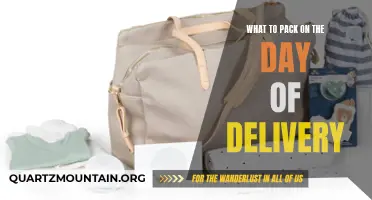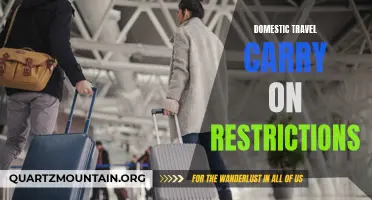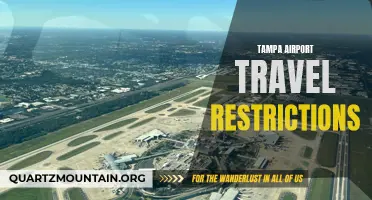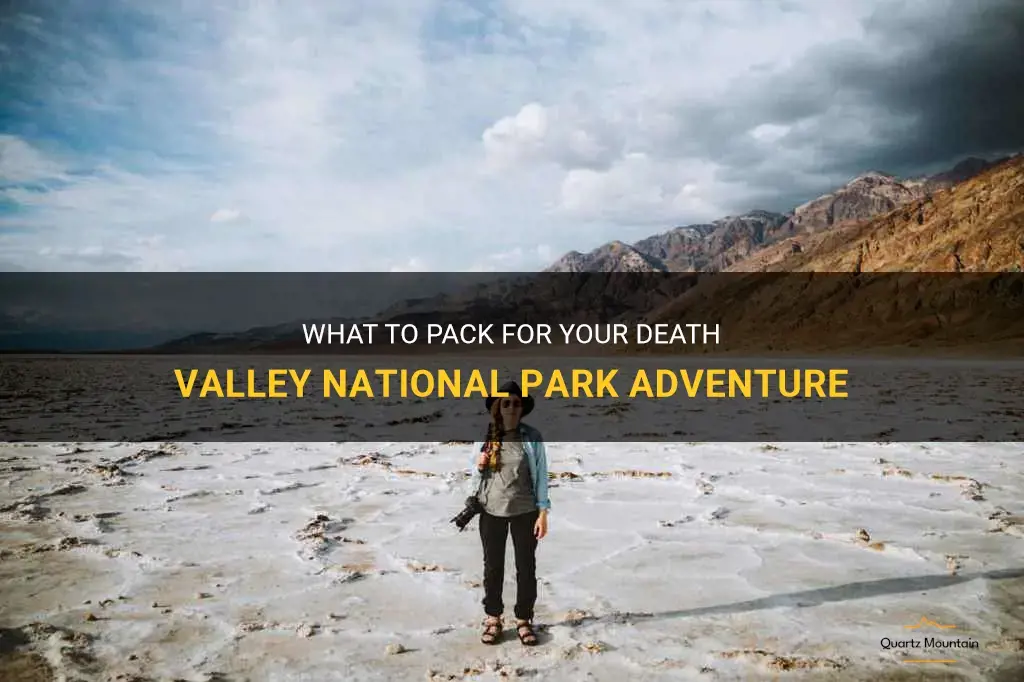
Are you ready to embark on an unforgettable adventure in Death Valley National Park? Before you head out into this vast desert wilderness, it's crucial to pack everything you'll need to ensure a safe and enjoyable experience. From essential survival gear to clothing and sunscreen, this guide will help you prepare for your Death Valley adventure like a seasoned explorer. So grab your backpack and let's dive into what to pack for your journey into this unique and awe-inspiring national park.
| Characteristics | Values |
|---|---|
| Location | California, U.S. |
| Area | 3,372.41 sq mi (8,756.30 km2) |
| Established | October 31, 1994 |
| Visitors in 2019 | 1,740,945 |
| Elevation | Lowest point: -282 ft (-86 m) |
| Highest point: 11,049 ft (3,368 m) | |
| Average temperature | Summer: 100°F (38°C) |
| Winter: 67°F (19°C) | |
| Precipitation | Average annual: 2.36 in (60 mm) |
| Record high: 4.52 in (115 mm) | |
| Camping | Furnace Creek Campground, |
| Texas Springs Campground, | |
| Sunset Campground, | |
| Stovepipe Wells Campground | |
| Hiking trails | Golden Canyon, |
| Zabriskie Point, | |
| Gower Gulch, | |
| Badwater Basin | |
| Attractions | Badwater Basin, |
| Zabriskie Point, | |
| Artist's Drive, | |
| Devil's Golf Course |
What You'll Learn
- What should I pack for a trip to Death Valley National Park?
- Is there any specific clothing or gear that is recommended for visiting Death Valley National Park?
- Are there any essential items that I should bring for my safety and comfort in the extreme desert conditions of Death Valley National Park?
- Are there any specific items that are not allowed in Death Valley National Park?
- Are there any recommended items for specific activities or areas within Death Valley National Park?

What should I pack for a trip to Death Valley National Park?
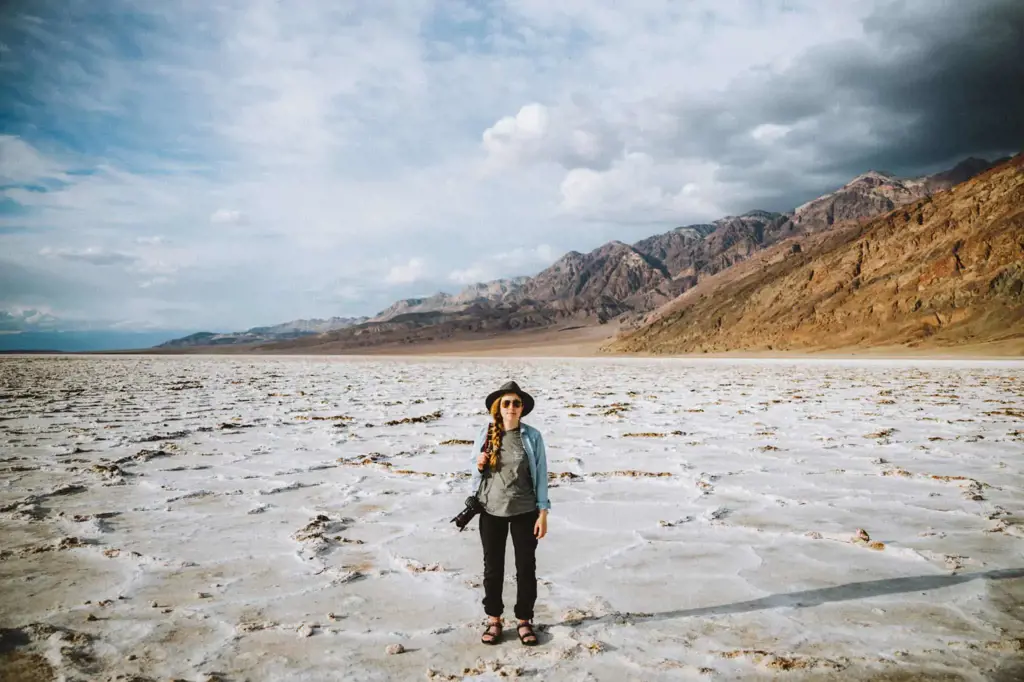
Planning a trip to Death Valley National Park? This vast desert park, located in California, is known for its extreme temperatures and harsh environment. To ensure a safe and enjoyable visit, it's important to pack the right gear and items. Here is a comprehensive checklist of what you should bring on your trip to Death Valley National Park:
- Water: Staying hydrated is crucial when visiting Death Valley. The park recommends drinking at least one gallon of water per person per day. Carry a reusable water bottle and fill it up whenever you have the chance. It's also a good idea to pack electrolyte tablets or sports drinks to replenish lost minerals.
- Sun protection: The sun in Death Valley can be intense, so it's important to protect yourself from harmful UV rays. Pack sunscreen with a high SPF, a wide-brimmed hat, sunglasses, and lightweight, long-sleeved clothing to cover your skin.
- Clothing: Dressing appropriately for the desert climate is essential. Opt for lightweight, breathable fabrics that provide sun protection. Long pants and long-sleeved shirts are recommended to protect you from the sun and potential stinging insects. Don't forget to pack a jacket or sweater for cooler evenings.
- Comfortable footwear: Exploring Death Valley often involves walking on uneven terrain, so sturdy and comfortable footwear is a must. Choose closed-toe shoes with good traction to protect your feet and ankles from rocks and cacti.
- Navigation tools: Death Valley is a vast park with many remote areas, so it's important to be able to navigate your surroundings. Bring a detailed map of the park and a compass or GPS device to help you find your way. Additionally, download offline maps or GPS apps on your phone as a backup.
- Snacks and meals: While Death Valley does have several campgrounds and eateries, it's always a good idea to have some snacks and meals with you. Pack non-perishable items such as granola bars, dried fruit, and nuts for quick and convenient energy.
- First aid kit: Accidents and injuries can happen anywhere, so having a basic first aid kit is essential. Include items such as bandages, antiseptic ointment, pain relievers, and any necessary prescription medications.
- Camping gear: If you plan on camping in Death Valley, be sure to bring all the necessary camping gear. This includes a tent, sleeping bag, camping stove, cooking utensils, and food storage containers.
- Camera and binoculars: Death Valley is known for its stunning landscapes and unique wildlife. Capture the beauty of the park by bringing a camera and binoculars to enhance your experience.
- Trash bags and reusable containers: Leave no trace and help preserve the beauty of Death Valley by packing out all your trash. Bring trash bags and reusable containers to properly dispose of your waste.
Remember, Death Valley is an extreme environment, so always err on the side of caution and come prepared. By packing these essential items, you can have a safe and enjoyable trip to Death Valley National Park.
What to Pack for a Day at the Museum: A Complete Guide
You may want to see also

Is there any specific clothing or gear that is recommended for visiting Death Valley National Park?
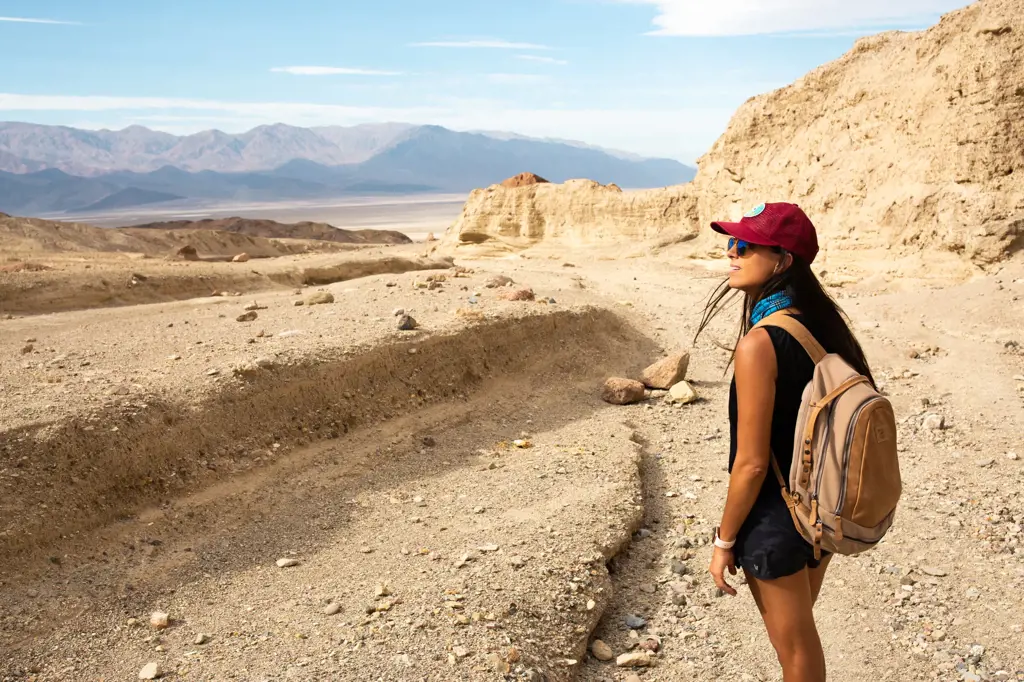
Death Valley National Park is a stunning desert landscape that attracts visitors from all over the world. While it offers breathtaking views and unique natural wonders, it is important to come prepared with the right clothing and gear to ensure a safe and enjoyable visit.
- Dress in layers: Death Valley experiences extreme temperature fluctuations throughout the day. It can be scorching hot during the day, with temperatures reaching well over 100 degrees Fahrenheit (37 degrees Celsius), and chilly at night, dropping down to the 60s (15 degrees Celsius). It is recommended to dress in layers to adjust to these temperature changes. Start with a lightweight, breathable shirt and pants, and bring a sweater or jacket for the cooler evenings.
- Wear sun protection: Sun exposure in Death Valley is intense, so it is crucial to protect your skin and eyes. Wear a wide-brimmed hat to shield your face and neck from the sun, and use sunscreen with a high SPF and broad-spectrum protection. Don't forget to reapply sunscreen regularly, especially if you are sweating or swimming. Additionally, wear sunglasses with UV protection to safeguard your eyes from the bright desert sun.
- Choose appropriate footwear: Exploring Death Valley often involves walking on uneven terrain, so it is important to have sturdy and comfortable footwear. Opt for closed-toe shoes or hiking boots that provide ankle support. Avoid sandals or flip-flops, as they offer little protection and may cause discomfort when walking through rocky areas or sand dunes.
- Bring plenty of water: Staying hydrated is essential in Death Valley's arid climate. Carry an ample supply of water, especially if you plan on hiking or engaging in any physical activities. It is recommended to drink at least one gallon (3.8 liters) of water per day. Consider using a hydration pack or carrying multiple water bottles to ensure you have enough water to last the entire day.
- Pack a backpack: A backpack will come in handy to carry your essentials during your visit to Death Valley. Along with water, pack a map, compass or GPS device, a first aid kit, snacks, sun protection items, and any necessary medications. You may also want to bring a camera, binoculars, or a guidebook to enhance your experience.
- Be prepared for emergencies: While Death Valley is a safe destination, it is wise to be prepared for any unforeseen circumstances. Familiarize yourself with the park's emergency procedures and carry a phone or radio for communication. It is also a good idea to let someone know about your plans and expected return time.
Example:
"Jane, an avid hiker, decided to visit Death Valley National Park. She knew that the extreme temperatures and rugged terrain required careful planning and preparation. The night before her trip, she researched what clothing and gear would be recommended for her visit.
Jane dressed in layers, wearing a lightweight, breathable shirt and pants, with a sweater in her backpack for the cooler evenings. She added a wide-brimmed hat to shield her face and neck from the sun, along with sunglasses to protect her eyes. Jane packed a sturdy pair of hiking boots to ensure comfort and safety during her explorations.
Water was an important consideration for Jane, so she packed a hydration pack filled with plenty of water. She also added a map, compass, first aid kit, snacks, and sunscreen to her backpack. She made sure to let a friend know about her plans and carried a phone for emergency communication.
Thanks to Jane's thorough preparation, she was able to enjoy her time in Death Valley National Park. She marveled at the stunning landscapes, explored hidden canyons, and captured breathtaking photographs. By following the recommended clothing and gear guidelines, Jane had a safe and unforgettable experience in Death Valley."
Essential Items to Pack for Your Aulani Vacation
You may want to see also

Are there any essential items that I should bring for my safety and comfort in the extreme desert conditions of Death Valley National Park?
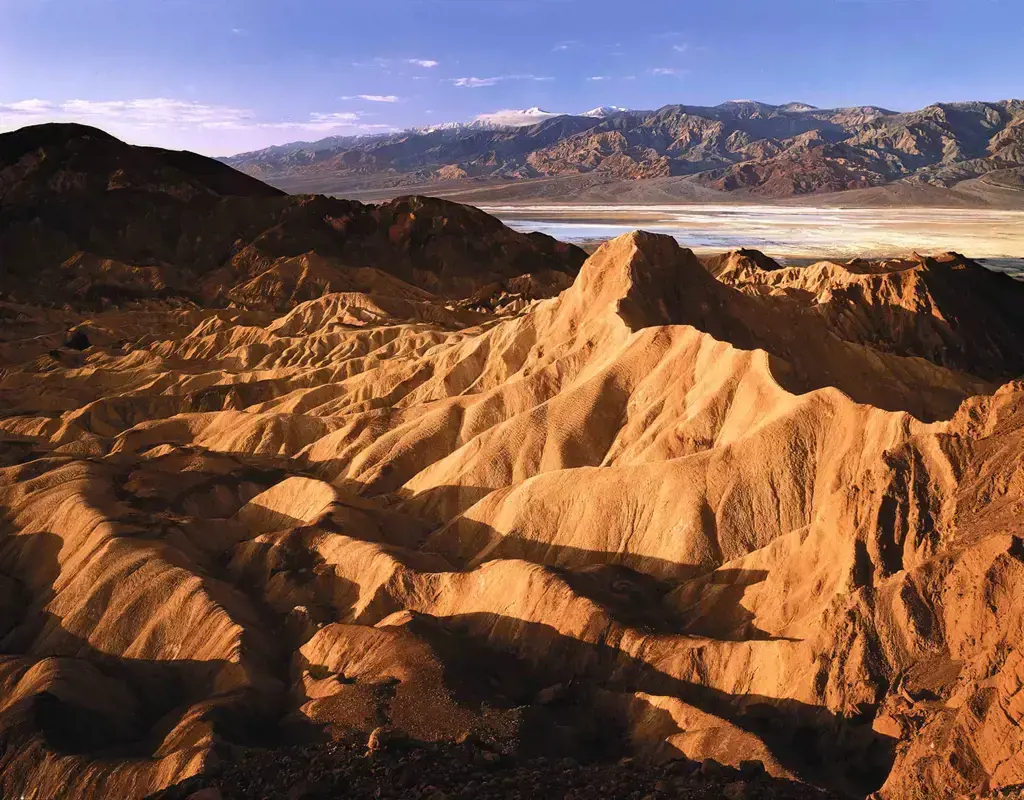
When venturing into the extreme desert conditions of Death Valley National Park, it is crucial to come prepared with essential items that will ensure your safety and comfort. This arid landscape is known for its scorching temperatures, harsh terrain, and lack of water sources. Here are some key items to pack before embarking on your desert adventure:
- Adequate Water Supply: Staying hydrated is absolutely essential in the desert. The average hiker will need at least one gallon (3.8 liters) of water per day to prevent dehydration. Make sure to pack enough water for the duration of your trip, as there are limited water sources available within the park.
- Sun Protection: The sun's rays in Death Valley can be extremely intense. Protect yourself from harmful UV rays by wearing a wide-brimmed hat, sunglasses, and sunscreen with a high SPF. It's also a good idea to wear lightweight, breathable clothing that covers your skin to prevent sunburn and to keep cool.
- Navigation Tools: Getting lost in the vast desert can be dangerous. Carry a detailed map of the park and a compass to help you stay on track. Alternatively, you can use a GPS device or smartphone app that has reliable offline maps of the area. Familiarize yourself with the park's trail systems and landmarks before setting out.
- Emergency Communication Devices: In case of an emergency, it is vital to have a way to communicate for help. Bring a fully charged cell phone, but keep in mind that reception may be limited or nonexistent in certain parts of the park. Additionally, consider carrying a satellite communication device or a personal locator beacon (PLB) that can transmit distress signals in remote areas.
- First Aid Kit: Accidents can happen anywhere, and having a well-stocked first aid kit is crucial for treating minor injuries and dealing with medical emergencies until help arrives. Make sure your kit includes items such as bandages, antiseptic ointment, pain relievers, and any necessary prescription medications.
- Protective Gear: The desert environment can be harsh on your body, so it's important to protect yourself from potential hazards. Pack sturdy boots that provide ankle support and protect your feet from rocks and thorny plants. Wear lightweight, breathable clothing that can shield you from the sun, while also offering some protection against abrasions and insects.
- Emergency Shelter and Sleeping Gear: In case you get lost or stranded, it's essential to have the means to stay warm and protected overnight. Carry a lightweight tent or a tarp that can provide adequate shelter from the elements. Additionally, bring a sleeping bag or blankets that are suitable for the temperature range you anticipate encountering.
- Food and Snacks: Pack plenty of high-energy, non-perishable food items to sustain yourself throughout your desert journey. Opt for lightweight options such as energy bars, nuts, dried fruits, and beef jerky. It's also a good idea to carry extra food in case of unexpected delays or emergencies.
Remember to research and plan your trip thoroughly before heading into Death Valley National Park. Check the park's official website or consult with experienced hikers for up-to-date information on weather conditions, trail closures, and potential hazards. By taking the necessary precautions and bringing the essential items mentioned above, you can enjoy a safe and comfortable experience in this extreme desert environment.
Essential Packing Tips for Camp Loyaltown: What to Bring for an Unforgettable Experience
You may want to see also

Are there any specific items that are not allowed in Death Valley National Park?
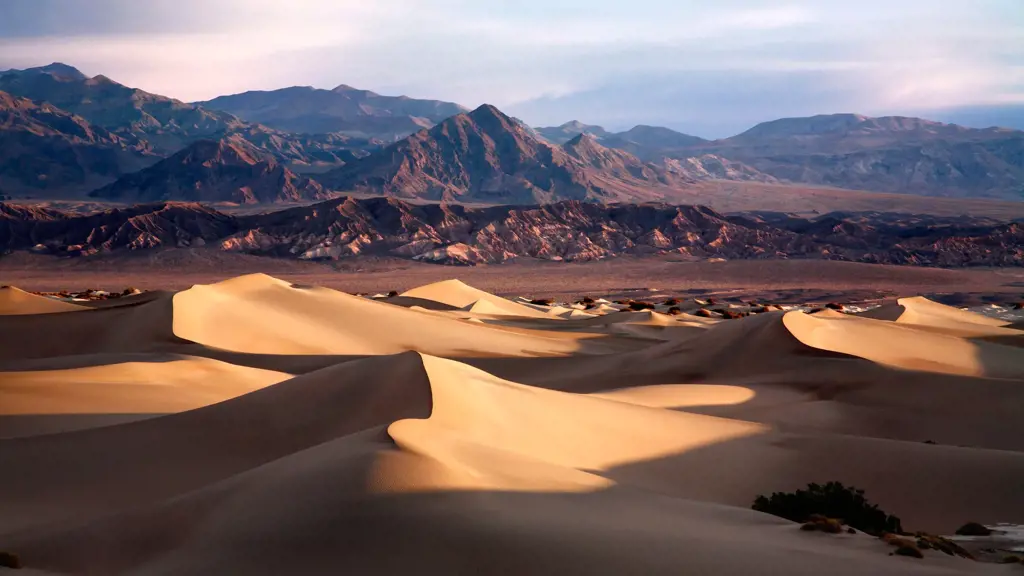
Death Valley National Park is a vast and beautiful expanse of desert landscape that attracts visitors from around the world. However, like any protected area, there are certain rules and regulations in place to protect the natural resources and ensure the safety of visitors. One such regulation pertains to the items that are not allowed in the park.
There are several items that are explicitly prohibited in Death Valley National Park. These include:
- Drones: The use of drones is strictly prohibited within the boundaries of the park. This rule is in place to prevent disturbance to the wildlife and preserve the tranquility of the park.
- Metal detectors: Operating a metal detector in Death Valley National Park is not allowed. This is to prevent any disturbance to the archeological resources and artifacts that may be present in the park.
- Off-road vehicles: The use of off-road vehicles, including ATVs and motorcycles, is not permitted in the park. This is to protect the fragile desert environment and prevent damage to the vegetation and soil.
- Firearms and fireworks: Bringing firearms or fireworks into the national park is strictly prohibited. This is to ensure the safety of visitors and prevent accidental fires.
- Pets: While pets are allowed in certain areas of the park, they must be kept on a leash no longer than six feet at all times. Pets are not allowed on trails or in buildings, and owners are responsible for cleaning up after their pets.
It is important to note that these regulations are in place to protect the natural resources and preserve the unique ecosystem of Death Valley National Park. Visitors are encouraged to familiarize themselves with the rules and regulations before entering the park to ensure a safe and enjoyable visit.
In addition to the items explicitly prohibited in the park, there are also certain restrictions on other items, such as camping equipment and campfires. For example, camping is only permitted in designated campgrounds, and campfires are only allowed in designated fire rings or grills.
When visiting Death Valley National Park, it is also important to come prepared with the necessary supplies and equipment. This may include sunscreen, hats, plenty of water, and a map or GPS device. It is also advisable to check the weather conditions and dress accordingly, as temperatures in the park can reach extreme levels.
In conclusion, there are several items that are not allowed in Death Valley National Park, including drones, metal detectors, off-road vehicles, firearms and fireworks. These regulations are in place to protect the natural resources and ensure the safety of visitors. It is important to familiarize oneself with the park rules and regulations before entering to ensure a safe and enjoyable visit.
Essential Items to Pack for Inpatient Mental Health Treatment
You may want to see also

Are there any recommended items for specific activities or areas within Death Valley National Park?
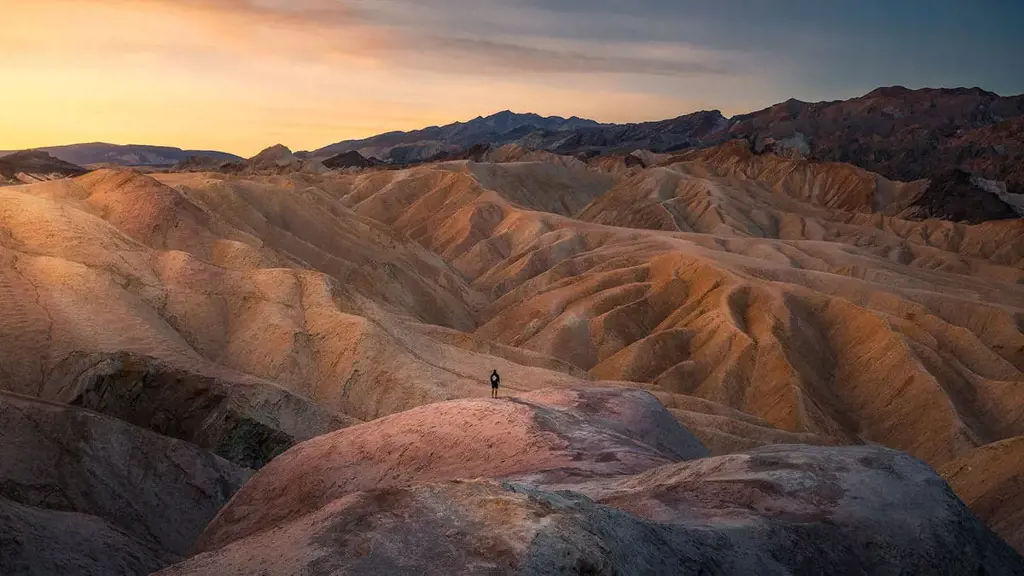
When planning a trip to Death Valley National Park, it's important to consider the specific activities or areas you will be visiting. Each activity or area within the park may require different items or equipment to ensure a safe and enjoyable experience. Here are some recommended items for specific activities or areas within Death Valley National Park:
Hiking: Death Valley offers a variety of trails for hikers of all levels. Whether you're going on a short day hike or a multi-day adventure, it's important to carry the proper gear. Some recommended items for hiking in the park include:
- Sturdy hiking boots: The terrain in Death Valley can be rugged, so it's important to have a good pair of hiking boots or shoes with ankle support.
- Sun protection: The park is known for its extreme heat and intense sun, so be sure to bring a wide-brimmed hat, sunglasses, and sunscreen.
- Plenty of water: Carry more water than you think you'll need, as dehydration can be a serious risk in the desert. It's recommended to have at least one gallon of water per person per day.
- Map and compass or GPS: Some trails in Death Valley can be poorly marked, so it's important to have navigational tools to avoid getting lost.
- First aid kit: Accidents can happen on the trail, so it's important to have a basic first aid kit with items like bandages, antiseptic wipes, and pain relievers.
Camping: Death Valley has several campgrounds and backcountry camping options. If you plan on camping in the park, here are some recommended items to bring:
- Tent and sleeping bag: The temperatures in Death Valley can drop significantly at night, so be sure to have a warm sleeping bag and a tent to protect you from the elements.
- Cooking equipment: If you plan on cooking your own meals, bring a camping stove and pots and pans.
- Food storage: It's important to properly store your food to prevent attracting wildlife. Bring bear-resistant containers or hang your food from a tree.
- Headlamp or flashlight: The night sky in Death Valley can be incredible, but it's also very dark. Bring a headlamp or flashlight for navigating at night.
- Extra supplies: Bring extra batteries, a repair kit for your tent or camping gear, and any other necessary camping supplies.
Photography: Death Valley is a photographer's paradise, with stunning landscapes and unique lighting conditions. If you plan on capturing the beauty of the park, consider bringing these recommended items:
- Camera gear: Depending on your skill level and preferences, bring your preferred camera equipment, such as a DSLR, lenses, tripod, and filters.
- Extra batteries and memory cards: You don't want to miss out on capturing that perfect shot because your equipment ran out of power or storage space.
- Lens cleaning kit: The desert environment can be dusty, so bring a lens cleaning kit to keep your gear clean and dust-free.
- Tripod: A tripod can be useful for capturing long exposure shots or steady photos in low light conditions.
- Comfortable clothing and hiking boots: Exploring the park for photo opportunities may involve some walking or hiking, so be prepared with comfortable clothing and footwear.
These are just some recommended items for specific activities or areas within Death Valley National Park. Depending on the season, weather conditions, and your personal preferences, you may need to adjust the list accordingly. It's always a good idea to check with the park's visitor center or website for up-to-date information before your trip. Remember to always prioritize safety and leave no trace when exploring this beautiful national park.
The Essential Packing List for Your Getaway House Retreat
You may want to see also
Frequently asked questions
When visiting Death Valley National Park, it is essential to pack sunscreen, as the park experiences extreme heat and sun exposure. It is also advisable to bring a hat, sunglasses, and lightweight, breathable clothing to protect yourself from the sun. It is crucial to stay hydrated, so packing a refillable water bottle is recommended. Additionally, it is a good idea to have a map or GPS device, as the park covers a vast area and can be challenging to navigate. Finally, don't forget to pack sturdy hiking shoes, as there are many trails and rocky terrains to explore in the park.
Yes, it is advisable to pack food for your visit to Death Valley National Park, as there are limited dining options within the park. It is a remote area, so it is best to bring non-perishable snacks and meals that can easily be prepared and eaten on the go. Additionally, bringing enough water and electrolyte replenishing drinks is crucial, as dehydration can be a significant risk in the hot desert environment.
If you plan on camping in Death Valley National Park, it is essential to pack a tent, sleeping bag, and sleeping pad for a comfortable night's sleep. The temperatures can drop significantly at night, so it is also advisable to bring warm layers of clothing, such as a jacket or sweater. Additionally, bring cooking utensils, a stove, and enough food and water for the duration of your camping trip. It is wise to pack a camp chair and a portable table for added comfort while at the campsite.
When hiking in Death Valley National Park, it is crucial to pack a hat, sunglasses, and sunscreen to protect yourself from the harsh sun rays. Bringing a first aid kit is also advisable, as there are limited medical facilities in the park. It is also essential to pack a sturdy pair of hiking boots or shoes, as well as a backpack with enough water and snacks for your hike. Finally, consider bringing a hiking pole for added stability and a map or GPS device to navigate the trails.
If you plan on staying overnight in Death Valley National Park, it is crucial to pack a tent, sleeping bag, and sleeping pad for a comfortable night's sleep. Since the park can get very cold at night, it is advisable to bring warm layers of clothing, such as a jacket or sweater. It is also essential to pack enough food and water for your stay, as there are limited dining options within the park. Lastly, bring a flashlight or headlamp for navigating at night, as well as a camp chair and portable table for added comfort at your campsite.




